Asoka Weeraratna lit up the flame of Buddhism in Germany
Posted on October 16th, 2012
by Rajitha Weerakoon
ƒÆ’-¡ƒ”š‚ It is when one takes into consideration the scenario of West Germany in the aftermath of the two World WarsƒÆ’-¡ƒ”š‚ ƒÆ’‚¢ƒ¢-¡‚¬ƒ¢¢”š¬…” bruised, battered and in political isolation with a bad image to boot, that the arduousƒÆ’-¡ƒ”š‚ task of Asoka Weeraratna could be best appreciated. The message of the Dhamma taken to Germany by the German Dharmaduta Society that he founded, helped the Germans, recovering from the horrors of the war, to find inner peace.
ƒÆ’-¡ƒ”š‚ Sixty years later, at an alms giving to sixty monks held at the All Ceylon Buddhist Congress (ACBC) premises on September 23, 2012 to mark the founding of the German Dharmaduta Society (GDS), Ven.Waskaduwe Mahindawansa Nayake Thero said that Sri Lanka could not afford to give Germany, ravaged by the war, houses, cars or food. Instead we gave them a gift far more valuable – the teachings of the Dhamma which led them on a spiritual journey eschewing materialistic riches and one which teaches the elimination of human suffering by the conquest of the mind.
The alms giving was preceded by a procession of monks from Athula Dassanarama Temple on Bauddhaloka Mawatha to the ACBC followed by the launching of a website dedicated to the GDS founder and a screening of a video documentary on the services rendered by him and the German Dharmaduta Society.
Asoka Weeraratna delivering a talk on Buddhism to a German Audience in Munich (1957)
ƒÆ’-¡ƒ”š‚ It was during extensive travels of young Weeraratna in Europe whose business was importing Swiss wrist watches that he saw a flicker of hope rising from the ashes in West Germany ƒÆ’‚¢ƒ¢-¡‚¬ƒ¢¢”š¬…” a spiritual hunger which he realized Sri Lanka could satisfy with the gift of the Dhamma. On his return to Sri Lanka, Weeraratna founded the Lanka Dhammaduta Society on September 21st, 1952, which was later renamed the German Dharmaduta Society in 1957.
In Sri Lanka, with the end of the colonial rule, there emerged a great desire among Buddhists, to promote the Dhamma globally which had to be through the work of dharmadutha monks and lay people. Ven. Mahindawansa Nayaka Thero pointed out that the tradition of ƒÆ’‚¢ƒ¢-¡‚¬ƒ…-dharmaduthaƒÆ’‚¢ƒ¢-¡‚¬ƒ”š‚ was not new to us. It was such a mission of Emperor Dharmasoka that brought Buddhism to Sri Lanka through Arhant Mahinda Thero. Therefore, Asoka WeeraratnaƒÆ’‚¢ƒ¢-¡‚¬ƒ¢-¾‚¢s efforts to take Buddhism to the West, was a continuation of this hallowed tradition.
ƒÆ’-¡ƒ”š‚ First Training Centre of theƒÆ’-¡ƒ”š‚ German Dharmaduta Society at Dalugama /Kelaniya (1953)ƒÆ’-¡ƒ”š‚ Left to Right: Mr. Simpson Wijeratne; Ven. Galle Anuruddha; Ven. ƒÆ’†’ƒ¢¢”š¬’ƒÆ’†’ƒ”š‚¢naponika;
Ven. ƒÆ’†’ƒ¢¢”š¬’ƒÆ’†’ƒ”š‚¢natiloka Maha Thera; UpƒÆ’†’ƒ”š‚¢saka Friedrich MƒÆ’†’ƒ”š‚¶ller ( later known as Ven. Polgasduwe Nyanawimala Maha Thera) Ven. Kudawella Wangissa Thera; Mr. Asoka Weeraratna ( Founder and Hony. Secretary of the German Dharmaduta Society)
ƒÆ’-¡ƒ”š‚ With the establishment of the new Society in 1952, Weeraratna was requested to survey and report to the Dharmaduta Society on the state of Buddhism as existed in Germany. And Weeraratna, focussed on taking the BuddhaƒÆ’‚¢ƒ¢-¡‚¬ƒ¢-¾‚¢s message to Germany, travelled throughout the country in 1953 when he met Germans who were already familiar with Buddhism, history and culture of Sri Lanka through the work of German scholars. Herman Oldenberg had translated the Dipavamsa in 1879 and the legendry linguist/historian Wilhelm GeigerƒÆ’‚¢ƒ¢-¡‚¬ƒ¢-¾‚¢s translations of Dipavamsa, particularly the Mahavamsa had made a mark in Germany.
However, with no Lankan Mission present in West Germany as diplomatic ties were yet to commence between the new Federal Republic of Germany and the then Ceylon which had newly gained independence, Weeraratna, virtually an Ambassador-at-large for Sri Lanka, got about on his own, on his mission.ƒÆ’-¡ƒ”š‚ ƒÆ’-¡ƒ”š‚
ƒÆ’-¡ƒ”š‚ ƒÆ’-¡ƒ”š‚ ƒÆ’-¡ƒ”š‚ In the report following his surveys, his proposal of the need to send a Buddhist mission to Germany to coincide with the 1956 Buddha Jayanthi, headed the recommendations. For Weeraratna, Germany was the pulse of Europe and the German people were the most intelligent consisting of the largest number of Theravada Buddhists found in Europe. Therefore, Weeraratna was confident that theƒÆ’-¡ƒ”š‚ Sambuddha Sasana in Germany will take firm root. His plan included the building of a Buddhist Vihara, a Buddhist library, a Preaching Hall and translation of the Tripitaka to the German language.
And to accomplish these goals ƒÆ’‚¢ƒ¢-¡‚¬ƒ…-A Million Rupee Trust FundƒÆ’‚¢ƒ¢-¡‚¬ƒ”š‚ was launched in 1954 at the Colombo Town Hall ƒÆ’‚¢ƒ¢-¡‚¬ƒ¢¢”š¬…” an event attended by the then former Prime Minister Mr. Dudley Senanayake along with Cabinet Ministers, Diplomats, Buddhist Scholars and Prelates. The Trust Fund wasƒÆ’-¡ƒ”š‚ declared as an approved charity by the Government and by 1956, the new Headquarters of the German Dharmaduta Society at 417, Bauddhaloka Mawatha, Colombo 07, had come up. The Opening was attended by the new Prime Minister Mr. S.W.R.D. Bandaranaike.
The first West German Ambassador to Sri Lanka, Dr. Georg Ahrens was a prominent invitee at the ceremonial opening and was given due respect befitting a Diplomat of high rank although West Germans were yet persona non grata at the time. And the pioneer German Bhikku in Sri Lanka, Ven. Nyanatiloka Maha Thera, who had been a monk in Sri Lanka for 53 years, was made the first Patron of the GDS and he and his pupil Ven. Nyanaponika Thera offered to teach the German language to bhikkus to enable them to carry out dharmaduta work in Germany.
Anagarika Dharmapala Das Buddhistische HausƒÆ’-¡ƒ”š‚ (1925)
ƒÆ’-¡ƒ”š‚ WeeraratnaƒÆ’‚¢ƒ¢-¡‚¬ƒ¢-¾‚¢s proposal to send to Germany a Buddhist Mission materialized with three learned Bhikkus from the Vajiraramaya setting off from the historical Mihintale Rock, sailing to Germany and going into residence in July 1957 at the famed ƒÆ’‚¢ƒ¢-¡‚¬ƒ…-Das Buddhistische HausƒÆ’‚¢ƒ¢-¡‚¬ƒ”š‚ founded in 1924 by Dr. Paul Dahlke, the pioneer German Buddhist.
Built on a 6-acre plot with living quarters, library, meeting hall, rooms, cells for guests for quiet contemplation and for receiving instructions on Buddhist Teaching, the ƒÆ’‚¢ƒ¢-¡‚¬ƒ…-Buddhist HouseƒÆ’‚¢ƒ¢-¡‚¬ƒ”š‚ was meant to be a place for inner purification. Dr. Dahlke and a group of thinkers had been living at the ƒÆ’‚¢ƒ¢-¡‚¬ƒ…-Buddhist HouseƒÆ’‚¢ƒ¢-¡‚¬ƒ”š‚ following the Dhamma. A guest at the ƒÆ’‚¢ƒ¢-¡‚¬ƒ…-Buddhist HouseƒÆ’‚¢ƒ¢-¡‚¬ƒ”š‚ had been Dr. Paul DahlkeƒÆ’‚¢ƒ¢-¡‚¬ƒ¢-¾‚¢s close friend Anagarika Dharmapala when he had stopped over in Berlin in 1925, while he was on his way to London. The group had maintained a close link with the International Buddhist Union, headquartered in the Island Hermitage in Dodanduwa while the ƒÆ’‚¢ƒ¢-¡‚¬ƒ…-Buddhist HouseƒÆ’‚¢ƒ¢-¡‚¬ƒ”š‚ had also served as the Publication hub of Buddhist news and literature to which Dr. Dahlke himself had been a contributor.
On the death of Dr. Dahlke in 1928, the property fell into the hands of his non-BuddhistƒÆ’-¡ƒ”š‚ relatives. Weeraratna on behalf of the Trustees of the GDS and notwithstanding anti-Buddhist opposition, proceeded to purchase the entire premises over a period of 4 years from 1957 following negotiations with Dr. DahlkeƒÆ’‚¢ƒ¢-¡‚¬ƒ¢-¾‚¢s nephew. Interest of a Bank Account ƒÆ’‚¢ƒ¢-¡‚¬ƒ¢¢”š¬…” a legacy left behind by a German Buddhist ƒÆ’‚¢ƒ¢-¡‚¬ƒ¢¢”š¬…” Walter Schmits who appreciated WeeraratnaƒÆ’‚¢ƒ¢-¡‚¬ƒ¢-¾‚¢s ambitious efforts, met the cost of maintenance of the ƒÆ’‚¢ƒ¢-¡‚¬ƒ…-Buddhist House.ƒÆ’‚¢ƒ¢-¡‚¬ƒ”š‚
The acquisitionƒÆ’-¡ƒ”š‚ of the ƒÆ’‚¢ƒ¢-¡‚¬ƒ…-Buddhist House,ƒÆ’‚¢ƒ¢-¡‚¬ƒ”š‚ converted to ƒÆ’‚¢ƒ¢-¡‚¬ƒ…-Berlin ViharaƒÆ’‚¢ƒ¢-¡‚¬ƒ”š‚ which turned out to be a semi monastery with Bhikkus taking up residence, is considered as the most notable achievement of the GDS and to date remains the centre of Theravada Buddhism in Germany and continental Europe. Today, discourses on Buddhism, meditation and discussions are conducted by Bhikkus and lay teachers at the ƒÆ’‚¢ƒ¢-¡‚¬ƒ…-Berlin Vihara.ƒÆ’‚¢ƒ¢-¡‚¬ƒ”š‚ The Buddhist Library is well patronized and Das Buddhistische Haus has been declared a National Heritage Monument by the German Government since 1995.
The first Buddhist mission to Germany
At Entrance to Das Buddhistische Haus in Berlin (1957)
Seated front row:ƒÆ’-¡ƒ”š‚ ƒÆ’-¡ƒ”š‚ ƒÆ’-¡ƒ”š‚ Ven. Kheminda; Ven. Soma; Ven. VinƒÆ’†’ƒ”š‚®ta
Standing from left to right: Mr. W.J. Oliver Soysa; Mr. J.T. Sirisena; Mr. Asoka WeeraratnaƒÆ’-¡ƒ”š‚ (Founder and Hony. Secretary, German Dharmaduta Society), Mr. Knobloch; Mr. Henry Amarasuriya (Chairman, Board of Trustees, GDS); Mrs. Leena Amarasuriya,
Ms. Wittiber, Mrs. Fischer, Miss Indrani Amarasuriya and a German lady.
ƒÆ’-¡ƒ”š‚ Sixty years on, the ƒÆ’‚¢ƒ¢-¡‚¬ƒ…-Berlin ViharaƒÆ’‚¢ƒ¢-¡‚¬ƒ”š‚ which Asoka Weeraratna established, remains a beacon, radiating Buddhist Teachings in Europe and attracting more and more Germans and people of various other nationalities, whether they are disillusioned by material trappings of modern Germany or those who seek spiritual solace.
The significance of the establishment of the ƒÆ’‚¢ƒ¢-¡‚¬ƒ…-Berlin ViharaƒÆ’‚¢ƒ¢-¡‚¬ƒ”š‚ is given in a nutshell when the reputed scholar and chronicler of Buddhist History in Germany, Dr. Hans Wolfgang Schumann stated in a seminal article on Buddhism in Germany, that ƒÆ’‚¢ƒ¢-¡‚¬ƒ…-the ƒÆ’‚¢ƒ¢-¡‚¬ƒ…-Buddhist HouseƒÆ’‚¢ƒ¢-¡‚¬ƒ”š‚ founded by Paul Dahlke in Berlin in 1924, survived World War 11 in a dilapidated condition and probably would have been auctioned and dismantled if the German Dharmadutha Society of Ceylon which inherited a large sum of money from a German Buddhist, had not come to its rescue. The GDS purchased it in 1958, renovated it, furnished with additional rooms, a good library and stationed Ceylonese Bhikkus there who take charge of regular lectures and meditation courses.ƒÆ’‚¢ƒ¢-¡‚¬ƒ”š‚
Dr. Schumann further says in this article that ƒÆ’‚¢ƒ¢-¡‚¬ƒ…-the organizational help which Buddhist societies in Asia, in particular Ceylon, in several critical periods have extended, has saved the flame of Dhamma in Germany from being blown out by the storm of historical events. IsnƒÆ’‚¢ƒ¢-¡‚¬ƒ¢-¾‚¢t this for the Germans, reason enough to be grateful?ƒÆ’‚¢ƒ¢-¡‚¬ƒ”š‚ ƒÆ’-¡ƒ”š‚ ƒÆ’-¡ƒ”š‚
Das Buddhistische Haus
With WeeraratnaƒÆ’‚¢ƒ¢-¡‚¬ƒ¢-¾‚¢s mission in Germany accomplished, he turned to re-building in Sri Lanka the most supportive and protective layer of Buddhism ƒÆ’‚¢ƒ¢-¡‚¬ƒ¢¢”š¬…” meditation. Towards this, he established the Mitirigala Nissarana Vanaya in 1967, a Forest Hermitage situated not far from Colombo and comprising thirty independent dwellings (Kutis) for Buddhist Yogi Monks who were guided by the outstanding meditation teacher, the late Venerable MƒÆ’-¾ƒ”š‚tara Sri ƒÆ’†’ƒ¢¢”š¬’ƒÆ’-¾ƒ”š‚nƒÆ’-¾ƒ”š‚rƒÆ’-¾ƒ”š‚ma MahƒÆ’-¾ƒ”š‚thera.
An arduous task completed, Weeraratna resigned from the post of Honorary Secretary of the GDS, and entered the Bhikku Order in 1972, as Ven. Dhammanisanthi Thero. Living the life of a forest monk at the Mitirigala Nissarana Vanaya Aranya, for a period of 27 years, Ven. Dhammanisanthi passed away in 1999 at the age of 80. A life well-spent in the true spirit of the Buddha Dhamma, his funeral, reflecting the fundamental concepts of Buddhism, was conducted in a simple, austere mannerƒÆ’-¡ƒ”š‚ in accordance with his wishes.
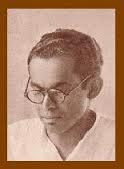 Asoka Weeraratne
Asoka Weeraratne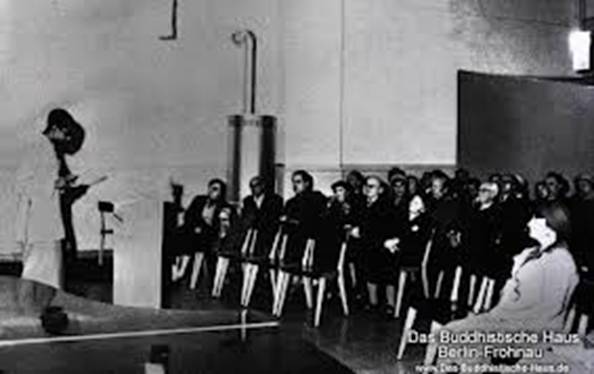
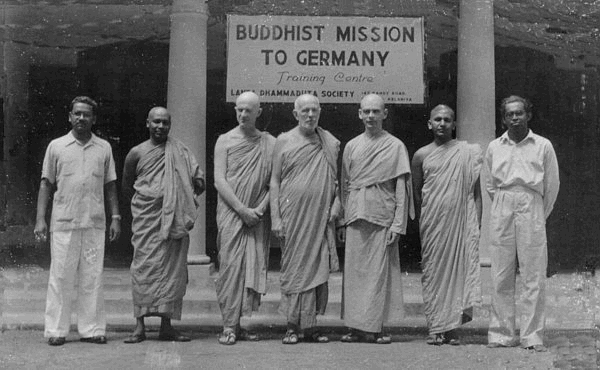
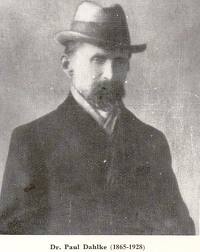
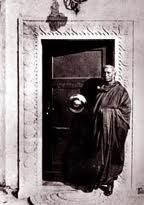

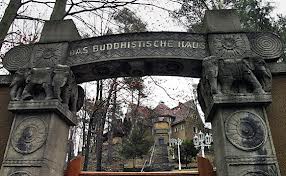
October 17th, 2012 at 4:41 am
May Ven. Dhammanisanthi attain nibbana !